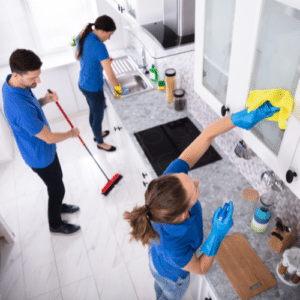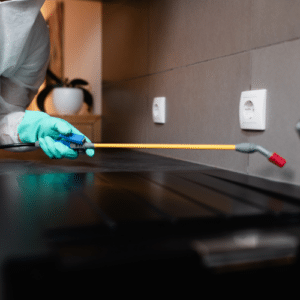
08 May Pest Control in Shared Housing
Combating Pests in Collective Living
Living in shared housing in South Florida, whether with roommates, in a dorm, or any communal living situation, presents unique challenges, especially in keeping your living space pest-free. At Pest Busterzz, a family-owned, organic pest control company, we dedicate ourselves to helping you maintain a healthy and safe living environment free from unwanted guests like insects and rodents.
In South Florida’s warm and humid climate, shared housing often becomes susceptible to pests such as cockroaches, ants, bed bugs, and rodents. These pests gravitate towards environments where food, water, and shelter are plentiful. Recognizing the habits and preferences of these pests is crucial for preventing them from becoming a problem in your home. Cockroaches, for example, flourish in moist areas where food is accessible, often making kitchens and bathrooms their preferred hideouts.
Shared Space Sanitation Strategies
One effective way to prevent pests is to keep your living space clean and clutter-free. Establishing and adhering to strict cleanliness practices in shared housing is essential. Regular vacuuming, dusting, and garbage disposal can drastically cut down the likelihood of pest infestations. Storing food in sealed containers and ensuring it’s never left out can also deter pests.
Proper food storage is critical in communal living environments. Storing dry goods like cereals and grains in airtight containers and keeping refrigerated items well sealed are good practices. Educating everyone in the household about the importance of these measures is crucial to their effectiveness, as common areas like kitchens can become pest hot spots if food isn’t stored correctly.
Building Upkeep to Combat Pests
It’s vital to maintain the building regularly to keep pests out. This maintenance includes sealing any cracks and gaps in walls, around windows, and along baseboards. Doors should fit snugly, and window screens must be intact to stop flying insects from entering. These simple adjustments significantly improve your overall pest management strategy.
In shared spaces, it’s important for everyone to participate in housekeeping. Establishing a cleaning schedule that involves sweeping, mopping, and organizing communal areas can help prevent infestations. Paying special attention to areas where crumbs and trash accumulate is critical, as these areas attract pests.
Responses to Early Pest Detection
Acting quickly is crucial if pests are spotted, to prevent a larger infestation. Over-the-counter sprays and baits can be effective for minor problems, but ensure they are safe for indoor use and follow all instructions carefully. For persistent issues, contacting a professional pest control service like Pest Busterzz might be necessary.
Professional help may be required for severe or ongoing pest issues. Pest Busterzz offers tailored services that are safe for both people and the environment. We use organic methods to keep your living space safe and comfortable for everyone.
Group Living Pest Strategies
Developing a pest response plan with your housemates or family can prepare you for potential issues. This plan should include prevention steps, immediate actions if pests are detected, and contact information for Pest Busterzz for professional intervention.
Incorporating pest control into your daily routine and making it part of regular household maintenance can significantly reduce infestation chances. Educating all residents on the importance of these measures can foster a proactive approach to pest management.
Conclusion
Maintaining a pest-free environment in shared housing requires everyone’s cooperation and diligence. By following these tips and possibly enlisting Pest Busterzz’s help, you can enjoy communal living without the worry of uninvited pests. Remember, keeping your shared spaces clean and well-maintained is the key to keeping pests at bay. If challenges arise, don’t hesitate to reach out to us; we’re here to help you live comfortably and pest-free.







No Comments